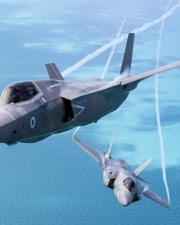The first tanks used in battle appeared during World War I. In the following decades, militaries have developed more sophisticated tanks, but what happens to the decommissioned tanks? A wide range of surplus military items are available to the public, which leads to the question, can civilians own tanks?
Table of Contents
TLDR – Civilians can purchase tanks. However, tanks are rarely street legal, limiting the places where an owner can drive the vehicle. The guns are also typically non-operational.
Can You Legally Own a Tank?
Yes, civilians can legally own tanks. There are hundreds to thousands of used tanks available for purchase online. However, it is often a complex process, especially when buying from overseas dealers. The dealer often ships the tank to the nearest seaport to the buyer. The buyer then needs to arrange the delivery of the tank from the port to their private property.
Depending on where the buyer lives, shipping can cost between $15,000 and $25,000. When buying from a domestic dealer, the shipment is still likely to cost thousands of dollars. As most tanks cannot drive on the highway, the tank needs to be delivered on a trailer.
Many of the tanks sold today come from foreign militaries. After the end of the cold war, Eastern European countries such as Slovakia and Czechoslovakia had a surplus of tanks and other military equipment. These countries are now selling their old tanks to make room for their new inventory. The tanks are typically sold through dealers that buy equipment directly from the military. The dealer then refurbishes the tank and may demilitarize it by decommissioning the guns.
Can You Own a Tank with a Working Cannon?
In most cases, a civilian will not be able to purchase a tank with a working cannon. Civilians cannot own a tank with operational guns or explosives unless they have a Federal Destructive Device permit or license. However, permits are rarely issued for the private use of active tanks.
The National Firearms Act (NFA) regulates the sale of destructive devices and several other categories of guns. It also established the Federal Firearms Licensing Center (FFLC) for issuing permits and licenses. The cannons and machine guns on tanks are considered destructive devices. A destructive device is any artillery weapon or firearm with a bore that measures over half an inch, except for most types of shotguns and rifles.
Before obtaining a destructive device, the buyer needs an FEP. The permit is issued by the FFLC, which is a department of the Bureau of Alcohol, Tobacco, Firearms and Explosives (ATF). The permits are primarily used for the sale of large fireworks for individuals that plan on using the fireworks for a public display. Civilians are unlikely to obtain an FEP for an operational cannon or machine gun without demonstrating a specific use, such as a controlled historical reenactment or research.
Federal explosives licenses (FELs) are typically only issued to manufacturers, importers, and dealers to facilitate the sale of operational tanks. However, an individual collector may apply for a Type 03 “Collector of Curios and Relics” license if they meet all other requirements.
How Much Does a Tank Cost?
The M1A2 Abrams is one of the latest tanks supplied to the US Army at a cost of about $6.21 million per tank. In 2018, the US Department of State approved the sale of 108 M1A2 tanks and other military equipment to Taiwan for $2 billion. However, the private sale of an individual tank is likely to cost much less.
Many of the tanks sold to civilians come from the Soviet era and cost between $50,000 and $100,000 depending on the condition and dealer. Tanks built after World War II tend to cost less as there are more units available. For example, the AMX-13 Light Tank, which was introduced in 1952, costs about $70,000.
Tanks from WWII or earlier are rarer, which increases the price. The Panzer IV, which was one of the most used German tanks during WWII, sells for about $2.4 to $2.6 million. Another popular WWII tank, the M4 Sherman, costs closer to $250,000.
Are There Street-Legal Tanks?
Tanks are typically treated as heavy machinery when it comes to traffic regulations. If the tank can fit on a road and meet all other requirements, it may be legal to drive it on the street. Most areas have weight limits for heavy machinery on public roads. The federal limit is 80,000 pounds but local or state laws may limit the weight to 34,000 pounds.
The tank may also need to be fitted with special rubberized tracks to minimize the risk of damage to the road. However, a tank may not be permitted on highways or bridges. Before driving a tank on a residential street, the owner should review their state’s department of transportation (DOT) regulations for heavy machinery. Along with meeting weight requirements, the tank may need a reflective triangle on the rear to mark it as a slow-moving vehicle.
Related Posts















